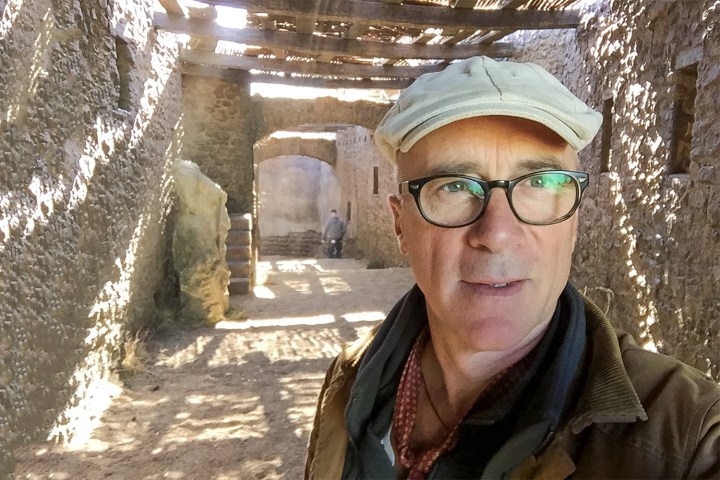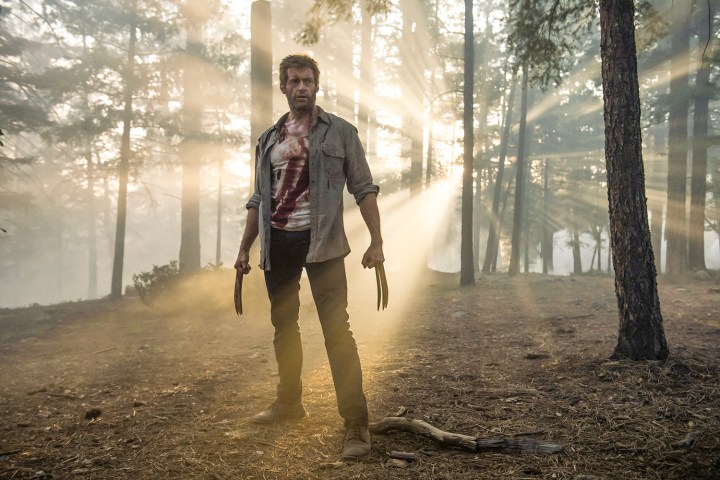
“When you hear this is the end of something, you know this isn’t going to be the usual story.”
Much like last year’s Deadpool, Mangold’s film was praised by critics and general audiences alike for its fresh, genre-bending approach and its willingness to test the boundaries of what a movie based on a comic book property can be. From its bleak vision of the future for some of the most famous superheroes of all time to the raw, visceral emotions it taps into time and again, Logan offers up a unique tale that’s reflected in the film’s current status as the second highest-grossing movie of the year.
Playing a key role in establishing that unparalleled tone for Logan was two-time Academy Award nomineeHow ’70s road flicks helped ‘Logan’ creators tell a new kind of superhero story, who served as the film’s director of photography. A veteran cinematographer who filled the same role on 2011’s X-Men: First Class, Mathieson received Academy Award nominations for his work on the Oscar-winning 2000 film Gladiator and 2004’s The Phantom of the Opera.
Digital Trends recently spoke to Mathieson about what made Logan such a unique experience, both as a filmmaker and for audiences.
Spoiler Alert: If you have not yet seen ‘Logan,’ stop now to reconsider reading this article until you have

Digital Trends: You worked on an earlier film in the X-Men franchise, so did you have a sense early on that Logan was going to be something very different from the rest of the X-Men and Wolverine movies?
John Mathieson: I kind of avoided the project a couple of times, to be honest. But then the producer, Joe Caracciolo, said, “Oh, you know we kill him, right?” And I said, “Oh, really?”
Immediately when you hear that this is the end of something, you know this isn’t going to be the usual story. I met James Mangold and we talked a bit, and they ended up hiring me. James made it clear that he wanted this to be a film that, when people get stabbed and fall over or get thrown through a building, they don’t get up … Wolverine’s always been a little bit gruff and not that friendly, but this time he’s a cantankerous drunk in a dead-end job, looking after Charles, who he doesn’t really get along with, and Charles is losing his mind. And Wolverine looks after him out of a sense of duty, not love.
So you realize you have these characters who live in this horrible, smelly, toxic factory in the middle of a horrible desert with not so much as a tree around. And that’s when you know that this isn’t the usual superhero thing with people flying around in fabulous jets wearing costumes that never get dirty.
So, knowing all of that, how did you approach the film at that point? Was there a particular theme you were working from, or any sort of directive that steered your approach to it?
It wasn’t so deliberate. I just knew what to do, because it was coming off the page, really. James’ references were films like The Getaway, The Gauntlet, and all of these really gritty ‘70s movies that we all go back to. There’s a generation of filmmakers that look at those films again and again and love them – stuff like Point Blank and the Clint Eastwood movies of that time.
Those are interesting films to reference – particularly since everyone seems to compare Logan to classic westerns.

There’s an integrity and a truth to those films. These are the films that got away from the studios in the ‘70s and went on the road. The cameras got smaller during that time, and they didn’t need to have these massive cabinets around them. You could put them in the car and just go. It was all new stuff, and the directors and cameramen were really liberated. They could shoot where they wanted, and didn’t need to be in a studio all of the time. And all of that stuff still holds true today. People still want to see the work of filmmakers from that era – directors like Steven Spielberg and so many others.
And no, I don’t want to say it’s a western, even though a lot of people are saying. For me, it was a road movie. It’s the sort of movie we all want to have a crack at – everyone who remembers those movies.
Among everything else that felt different about the film, the action scenes felt particularly unique – a little more raw and messy, it seemed – than the polished sequences we’re accustomed to seeing in comic book movies these days. How did you achieve that effect? Was it even intentional?
“I don’t want to say it’s a western, though a lot of people are. For me, it was a road movie.”
People say it’s a violent movie, but a lot of films are more violent than Logan. I think it’s the fact that these people feel real to you. There’s not a lot of fancy stuff with lasers coming out of people’s eyes. Things feel normal. Going to the gas station and getting gas, giving Charles his medication and taking him to the men’s room, and making sure everyone eats at night, all of that feels normal. So when something happens to these characters, the violence feels more violent – because you associate with them. Rather than picking up X-Men: First Class and seeing characters who get thrown through a building and then get up looking fine, it feels different.
As far as the stunts and the stunt work, it was all shot in real-time without too much slo-mo, with a bit of a shudder here and there. There was obviously a lot of effects in the film, but the fighting was very physical, with a little bit of wire work. People weren’t flying through the air.
The framing of the fight scenes also seemed to diverge from what we typically see in superhero movies …
That’s because they weren’t shooting it too close. I’m a real believer in that, ever since Gladiator. If you shoot it too close, you don’t see the action. … Standing back [with a] medium-long lens, people don’t fall out of frame, they fall onto the ground. People fall off the edge and you see them land.
So I think a lot of it is that emotional attachment to the actors and the players in the film, because you know they’re mortal, but it’s also that James Mangold and [second unit director and stunt coordinator] Garrett Warren worked very hard on making it feel different and crisp. You bash someone and they don’t get up again. Things come off people and they don’t get up. Logan gets through them and then he runs. It’s not always a macho stand-off.
Both Logan and Charles Xavier looked remarkably different in this film. How did you approach the task of aging the actors and bringing all of that frailty in their characters to the screen?

Well, what you saw is what I saw, which is what makes it so great. That was really Hugh. He’s got this old man wig on, because Hugh – unlike a lot of actors – has a good head of hair … so he has to put on a swim hat every day and a wig on top of that, and here I am thinking, “This is New Orleans in the summer and New Mexico after that. How does he do it?” But he puts this damn thing on and never complains. You have to tip your hat to the man. He’s charming, he knows everyone’s name, he can sing, he can dance, and it’s really kind of irritating. [Laughs]
But it really was makeup. They did such a fantastic job. The scarring had to go on every day, I don’t know long it took them.
The makeup work on Patrick Stewart was impressive, too.
Patrick had the liver spots on his head and a dodgy eye, like a boiled trout. He had that contact lens he had to put in every day, and he really changed the way his body appeared. He’s such a great actor. I saw him at the premiere of the film and he looked fantastic. He was all shiny and bright-eyed and enthusiastic. I spent so long doing post-production with this cantankerous old man, and then there he is looking so great at the premiere.
What about the scene in which Logan fights the younger clone of himself? How did that scene play out from your side of things?
“People say it’s violent, but a lot of films are more violent. I think it’s the fact that these people feel real.”
There were effects, but a lot of it was done in that old style. When Hugh fights himself, he has very good stand-ins and doubles and such that look a lot like him, so you’d shoot over X-24’s shoulder, and that’s a stand-in, and then Hugh goes into makeup and becomes X-24 and does the other side of the fight. So yeah, there’s face replacement, but a lot of the time he’s fighting one of his doubles on both sides of the fight.
Was there a point when you saw the final cut of the film and knew you had something special?
To be honest, no. But that’s because I’m watching it all the way through and I have to go through and color the whole film in post-production, and spend so much time with it. What struck me about it when I did see that cut, though, was how much emotion and layering that Mangold put into it. He really eked everything out of these actors that he possibly could to make you feel empathy for them. You know who they are and you like them not because they‘re fancy or clever, but because you feel for them. That’s what really struck me when I saw it.
I think that was really the moment when I thought, “Hello, this wasn’t what was on the box. This wasn’t what I was expecting.”



